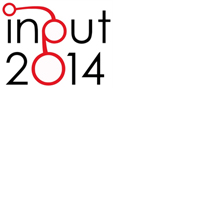Geodesign from Theory to Practice: From Metaplanning to 2nd Generation of Planning Support Systems
Abstract
This paper deals with the concept of Geodesign, a new approach to spatial planning and design which is grounded on extensive use of Geographic Information Science methods and tools. As a method Geodesign is intended to inform projects since their conceptualization, to analysis and diagnosis, to design of alternatives and impact simulation, and eventually the final choice. This approach appears particularly urgent and actual to many scholars from academia and practitioners from the industry and the planning practice for advances in GIScience nowadays offer unprecedented data and tools to manage territorial knowledge for decision-making support. The author argues research in Geodesign may contribute to solve major actual pitfalls in sustainable spatial planning: namely it may offer methods to help planners to inform sustainable design alternatives with environmental considerations and contextually assess their impacts; secondly, it may help to ensure more transparent, responsible, and accountable democratic decision-making processes. The argumentation is supported by the author recent research results with regards to the evolution from 1st generation Planning Support Systems (PSS), to metaplanning and 2nd generation PSS.Downloads
References
Arnstein, S. (1969) "A Ladder of Citizen Participation," JAIP, Vol. 35, No. 4, pp. 216-224.
Brail, R. and Klosterman, R. (2001) Planning Support Systems: integrating Geographic Information Systems, models, and visualization tools. ESRI Press, Redlands, CA, United States.
Campagna M. (2004) Le tecnologie dell’informazione spaziale per il governo dei processi insediativi. Franco Angeli, Milano.
Campagna, M. (2013) Geodesign, Planning Support Systems and Metaplanning, Disegnare con, 6(11):133-140, 2013
Campagna M., Matta A. (2014) “Geoinformation technologies in sustainable spatial planning: a Geodesign approach to local land-use planning”. In Proceedings of the 2nd International Conference on Remote Sensing and Geoinformation of Environment, Paphos, Cyprus, April 2014
Campagna M., Ivanov, K., Massa, P. (2014) Orchestrating the spatial planning process: from Business Process Management to 2nd generation Planning Support Systems. In (accepted) Proceedings of the 17th AGILE Conference on Geographic Information Science Connecting a Digital Europe through Location and Place. June 2014, Castellon, Spain
Craglia, M. de Bie, K., Jackson, D., Pesaresi, M., Remetey-Fülöpp, G., Wang, C., Annoni, A. Bian, L.; Campbell, F, Ehlers, M., van Genderen, J., Goodchild, M. Guo, H., Lewis, A. Simpson, R., Skidmore, A., Woodgate, P. (2012), “Digital Earth 2020: towards the vision for the next decade”. International Journal of Digital Earth, 5(1).
de Bettencourt, J., Mandell, M., Polzin, S., Sauter, S., Schofer, J. (1982) “Making planning more responsive to its users: the concept of metaplanning”. Environment and Planning A, 14(3):311-322
Emshoff. J. (1978) “Planning the process of improving the planning process: A case study in meta-planning”. Management Science 24(11):1095-1108
Fischer, T. (2007), Theory and Practice of Strategic Environmental Assessment, Earthscan, London.
Fischer, T. (2010) Reviewing the quality of strategic environmental assessment reports for English spatial plan core strategies, Environmental Impact Assessment Review, 30(1), pp. 62-69.
Flyvbjerg, B. (1998) Rationality and Power: democracy in practice, The University of Chicago Press, Chicago
Geertman, S. and Stillwell, J. (2009). “Planning support systems: content, issues and trends”. In S. Geertman and J. Stillwell, editors, Planning support systems best practice and new methods, pages 1-26. Springer, Dordrecht, The Netherlands.
Khakee. A., (1998) “Evaluation and planning: inseparable concepts”, Town Planning Review, 69(4), 359-374
Malczewski, J., (2004) “GIS-based land-use suitability analysis: a critical overview”, Progress in Planning, 62(1), 3–65 (2004).
Niemeijer, D., and de Groot, R. (2008) “A conceptual framework for selecting environmental indicator sets”, Ecological Indicators, 8(1), 14 – 25
Partidario, M. (2012) Strategic Environmental Assessment Better Practice Guide - methodological guidance for strategic thinking in SEA. Governo de Portugal, available at http://www.iaia.org/publicdocuments/special-publications/SEA%20Guidance%20Portugal.pdf [last visited 10.03.2014].
Sheate, W., Byron, H. and Smith, S. (2004), “Implementing the SEA Directive: sectorial challenges and opportunities for the UK and EU”, European Environment, 14, 73–93.
Steinitz, C. (2012), A Framework for Geodesign. Changing Geography by Design, Esri Press, Redlands.
United Nations (UN), (1992), “Results of the World Conference on Environment and Development: Agenda 21”, UNCED, Rio de Janeiro, United Nations, New York.
United Nations General Assembly (UNGA), (1992), “Rio Declaration on Environment and Development”, Report of the UN Conference on Environment and Development, Rio de Janeiro.
Weske, M. (2012) Business Process Management: Concepts, Languages, Architectures. Springer-Verlag, Berlin Heidelberg.
Zanon, B. (2014) “Planners' Technical Expertise: Changing Paradigms and Practices in the Italian Experience”. Planning Practice & Research, 29(1):75-95.

Copyright (c) 2014 Tema. Journal of Land Use, Mobility and Environment

This work is licensed under a Creative Commons Attribution 4.0 International License.
Authors who publish in this journal agree to the following:
1. Authors retain the rights to their work and give in to the journal the right of first publication of the work simultaneously licensed under a Creative Commons License - Attribution that allows others to share the work indicating the authorship and the initial publication in this journal.
2. Authors can adhere to other agreements of non-exclusive license for the distribution of the published version of the work (ex. To deposit it in an institutional repository or to publish it in a monography), provided to indicate that the document was first published in this journal.
3. Authors can distribute their work online (ex. In institutional repositories or in their website) prior to and during the submission process, as it can lead to productive exchanges and it can increase the quotations of the published work (See The Effect of Open Access)
